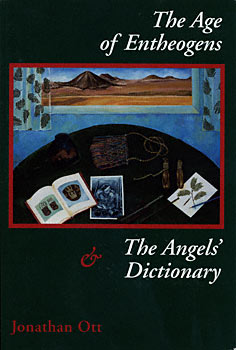Copyright 2007 Chalmers Johnson
This article was originally posted at TomDispatch.com.
Suprise Attacks
As an idea, if not an actual entity, the Central Intelligence Agency came into being as a result of December 7, 1941, when the Japanese attacked the U.S. naval base at Pearl Harbor. It functionally came to an end, as Weiner makes clear, on September 11, 2001, when operatives of al-Qaeda flew hijacked airliners into the World Trade towers in Manhattan and the Pentagon in Washington, DC. Both assaults were successful surprise attacks.
The Central Intelligence Agency itself was created during the Truman administration in order to prevent future surprise attacks like Pearl Harbor by uncovering planning for them and so forewarning against them. On September 11th, 2001, the CIA was revealed to be a failure precisely because it had been unable to discover the al-Qaeda plot and sound the alarm against a surprise attack that would prove almost as devastating as Pearl Harbor. After 9/11, the Agency, having largely discredited itself, went into a steep decline and finished the job. Weiner concludes: "Under [CIA Director George Tenet's] leadership, the agency produced the worst body of work in its long history: a special national intelligence estimate titled "˜Iraq's Continuing Programs for Weapons of Mass Destruction.'" It is axiomatic that, as political leaders lose faith in an intelligence agency and quit listening to it, its functional life is over, even if the people working there continue to report to their offices.
http://aep.typepad.com/american_empire_project/2007/07/the-life-and-ti.html
and so on!
The Agency gathered under one roof Wall Street brokers, Ivy League professors, soldiers of fortune, ad men, newsmen, stunt men, second-story men, and con men. They never learned to work together — the ultimate result being a series of failures in both intelligence and covert operations. In January 1961, on leaving office after two terms, President Eisenhower had already grasped the situation fully. "Nothing has changed since Pearl Harbor," he told his director of central intelligence, Allen Dulles. "I leave a legacy of ashes to my successor." Weiner, of course, draws his title from Eisenhower's metaphor. It would only get worse in the years to come.
The historical record is unequivocal. The United States is ham-handed and brutal in conceiving and executing clandestine operations, and it is simply no good at espionage; its operatives never have enough linguistic and cultural knowledge of target countries to recruit spies effectively. The CIA also appears to be one of the most easily penetrated espionage organizations on the planet. From the beginning, it repeatedly lost its assets to double agents.
and on and on!
Nothing has done more to undercut the reputation of the United States than the CIA's "clandestine" (only in terms of the American people) murders of the presidents of South Vietnam and the Congo, its ravishing of the governments of Iran, Indonesia (three times), South Korea (twice), all of the Indochinese states, virtually every government in Latin America, and Lebanon, Afghanistan, and Iraq. The deaths from these armed assaults run into the millions. After 9/11, President Bush asked "Why do they hate us?" From Iran (1953) to Iraq (2003), the better question would be, "Who does not?"
his book is one of the best possible places for a serious citizen to begin to understand the depths to which our government has sunk. It also brings home the lesson that an incompetent or unscrupulous intelligence agency can be as great a threat to national security as not having one at all.
Chalmers Johnson's latest book is Nemesis: The Last Days of the American Republic (Metropolitan Books, 2007). It is the third volume of his Blowback Trilogy, which also includes Blowback and The Sorrows of Empire. A retired professor of international relations from the University of California (Berkeley and San Diego campuses) and the author of some seventeen books primarily on the politics and economics of East Asia, Johnson is president of the Japan Policy Research Institute.
http://www.americanempireproject.com/





